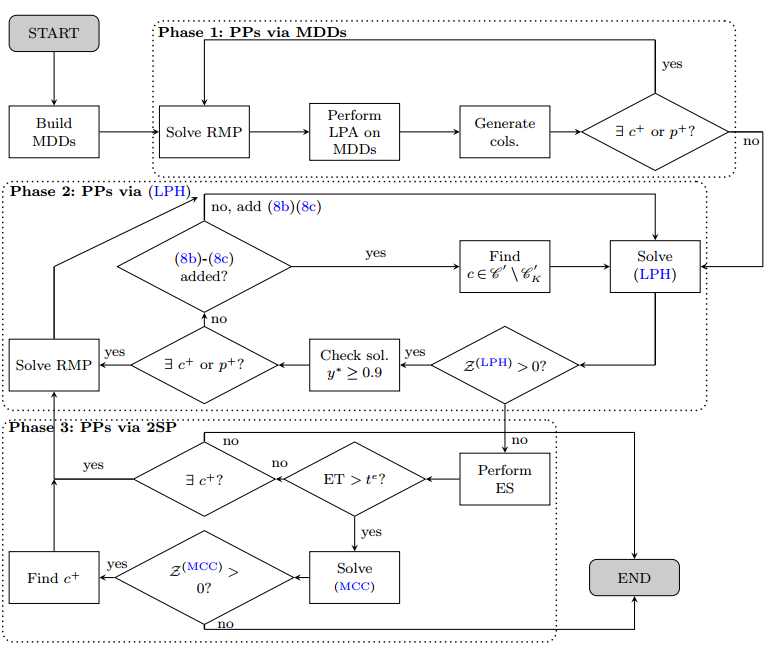編者按
在“10月MSOM文章精選:智慧醫療”中,我們有主題、有針對性地選擇了MSOM期刊雜志中一些有關智慧醫療領域的有趣文章,不但對文章的內容進行了概括與點評,而且也對文章的結構進行了梳理,旨在激發廣大讀者的閱讀興趣與探索熱情。在本期“論文導讀”中,我們以“智慧醫療”為主題,分別探究了疾病預防保健、腎交換相關分支定價問題、共享醫療預約問題,涉及機器學習、運籌學、共享經濟等諸多知識。
推薦文章1
●?題目:Data-Driven Allocation of Preventive Care with Application to Diabetes Mellitus Type II
數據驅動的II型糖尿病預防保健配置研究
●?期刊:Manufacturing & Service Operations Management
●?原文鏈接:https://pubsonline.informs.org/doi/10.1287/msom.2021.0251
●?作者:Mathias Kraus, Stefan Feuerriegel, Maytal Saar-Tsechansky
●?關鍵詞:
-
preventive care? ?預防保健
-
disease prevention? ?疾病預防
-
healthcare analytics? ?醫療分析
-
machine learning? ?機器學習
●?摘要:
Problem definition:?Increasing costs of healthcare highlight the importance of effective disease prevention. However, decision models for allocating preventive care are lacking.
Methodology/results:?In this paper, we develop a data-driven decision model for determining a cost-effective allocation of preventive treatments to patients at risk. Specifically, we combine counterfactual inference, machine learning, and optimization techniques to build a scalable decision model that can exploit high-dimensional medical data, such as the data found in modern electronic health records. Our decision model is evaluated based on electronic health records from 89,191 prediabetic patients. We compare the allocation of preventive treatments (metformin) prescribed by our data-driven decision model with that of current practice. We find that if our approach is applied to the U.S. population, it can yield annual savings of $1.1 billion. Finally, we analyze the cost-effectiveness under varying budget levels.
Managerial implications:?Our work supports decision making in health management, with the goal of achieving effective disease prevention at lower costs. Importantly, our decision model is generic and can thus be used for effective allocation of preventive care for other preventable diseases.
問題定義:?醫療保健費用的增加凸顯了有效預防保健的重要性。然而,當下仍缺乏有效分配預防保健的決策模型。
方法/結果:?在本文中,我們開發了一個數據驅動的決策模型,用于確定風險患者預防治療的成本效益分配。具體的說,我們結合了反事實推理、機器學習和優化技術來構建一個可擴展的決策模型,該模型可以利用高維醫療數據,例如現代電子健康記錄中的數據。我們的決策模型是基于89191名糖尿病前期患者的電子健康記錄進行評估的。我們比較了由我們的數據驅動的決策模型規定的預防性治療(二甲雙胍)的分配與當前的實踐。我們發現,如果我們的方法適用于美國的民眾,每年可以節省11億美元。最后,分析了不同預算水平下的成本效益。
管理意義:?我們的工作有效支持了健康管理決策,以較低的成本實現有效疾病預防的目標。重要的是,我們的決策模型是通用的,因此可以用于有效分配其他可預防疾病的預防性護理。
●?核心解法及點評
作者開發了一個數據驅動的決策模型用于分配預防醫療資源,即一個接收來自患者的電子病歷作為輸入的決策模型,輸出是具有成本效益的預防性護理資源分配。決策模型結合了因果推理,機器學習和優化結構,分為三個連續階段。(1)第一階段使用反事實推理來估計電子病歷預防性治療的有效性。因此,在量化處方預防性治療時,具有特定風險概況的患者的個性化糖尿病風險變化。在這里,由于治療效果往往是未知的,只能在實踐中滿足需求,但必須從電子病歷估計。接下來討論了當治療效果已知時(如隨機對照試驗)可以使用的替代方法。(2)第二階段估計個體患者糖尿病發病的個體化風險。具體來說,我們將機器學習應用于患者的電子病歷,以預測發病的概率。(3)第三階段利用預測的風險和治療效果,在給定的預算約束下優化對患者的預防保健配置。

推薦文章2
●?題目:A Branch-and-Price Algorithm Enhanced by Decision Diagrams for the Kidney Exchange Problem
腎交換問題的決策圖改進的分支定價算法
●?期刊:Manufacturing & Service Operations Management
●?原文鏈接:https://pubsonline.informs.org/doi/10.1287/msom.2022.0192
●?作者:Lizeth C. Riascos-álvarez, Merve Bodur, Dionne M. Aleman
●?關鍵詞:
-
Kidney exchange? ?腎交換
-
integer programming? ?整數規劃
-
branch and price? ?分支定價
-
multi-valued decision diagrams? ?多值決策圖
●?摘要:
Problem definition:?Kidney paired donation programs allow patients registered with an incompatible donor to receive a suitable kidney from another donor, as long as the latter’s co-registered patient, if any, also receives a kidney from a different donor. The kidney exchange problem (KEP) aims to find an optimal collection of kidney exchanges taking the form of cycles and chains.
Methodology/results:?We develop the first decomposition method that is able to consider long cycles and long chains for projected large realistic instances. Particularly, we propose a branch-and-price framework in which the pricing problems are solved (for the first time in packing problems in a digraph) through multi-valued decision diagrams. We present a new upper bound on the optimal value of the KEP, obtained via our master problem. Computational experiments show superior performance of our method over the state of the art by optimally solving almost all instances in the PrefLib library for multiple cycle and chain lengths.
Managerial implications:?Our algorithm also allows the prioritization of the solution composition, e.g., chains over cycles or vice versa, and we conclude, similar to previous findings, that chains benefit the overall matching efficiency and highly sensitized patients.
問題定義:?腎臟配對捐贈計劃允許與不相容的供者注冊的患者從另一個供者那里接受合適的腎臟,只要后者的共同注冊患者(如果有的話)也從另一個供者那里接受腎臟。腎臟交換問題(KEP)旨在尋找以循環和鏈的形式進行腎臟交換的最佳集合。
方法/結果:?我們開發了第一個分解方法,能夠考慮長周期和長鏈的預測大型實例。特別地,我們提出了一個分支定價法框架,其中定價問題通過多值決策圖解決(首次在有向圖中的裝箱問題中)。我們給出了KEP最優值的一個新的上界,這是由我們的主問題得到的。計算實驗表明,我們的方法通過最優地解決PrefLib庫中幾乎所有的多循環和鏈長度的實例,優于目前的技術水平。
管理意義:?我們的算法還允許解決方案在優先級上的自由組合,例如,鏈優于循環或反之亦然,我們得出結論,與之前的發現相似,鏈有利于整體匹配效率和高度敏感的患者。
● 核心解法及點評
作者建立了一個通用的解決方案框架,包括通過MDD搜索循環和鏈(階段1),搜索正價格鏈和周期的切割平面算法,其最終目標是證明不存在更多的正價格鏈(階段2),以及尋找正價格周期的兩步搜索(如果有的話)(階段3)。下圖說明了該框架。作者解決了在腎臟交換中尋找匹配的問題,開發了一個新的分支定價法算法框架,通過MDD來解決循環和鏈的定價問題。

推薦文章3
●?題目:Shared Service Delivery Can Increase Client Engagement: A Study of Shared Medical Appointments
共享服務交付可以增加客戶參與:共享醫療預約的研究
●?期刊:Manufacturing & Service Operations Management
●?原文鏈接:https://pubsonline.informs.org/doi/abs/10.1287/msom.2021.0012
●?作者:Ryan W. Buell, Kamalini Ramdas, Nazl? S?nmez, Kavitha Srinivasan, Rengaraj Venkatesh
●?關鍵詞:
-
client engagement? ?客戶關系
-
shared service delivery? ?共享服務交付
-
shared medical appointments? ?共享醫療預約
-
healthcare operations? ?醫療運營
-
behavioral operations 行為運作
●?摘要:
Problem Definition:?Clients and service providers alike often consider one-on-one service delivery to be ideal, assuming – perhaps unquestioningly – that devoting individualized attention best improves the client outcomes. In contrast, in shared service delivery, clients are served in batches and the dynamics of group interaction could lead to increased client engagement – which could improve outcomes. However, the loss of privacy and personal connection might undermine engagement.
Practical Relevance:?The engagement dynamics in one-on-one and shared delivery models have not been rigorously studied. To the extent that shared delivery may result in comparable or better engagement than one-on-one delivery, service providers in a broad array of contexts may be able to create more value for clients by delivering service in batches.
Methodology:?We conducted a randomized controlled trial with 1,000 patients who were undergoing glaucoma treatment over a three-year period at a large eye hospital. Using verbatim and behavioral transcripts from over 20,000 minutes of video recorded during our trial, we examine how shared medical appointments (SMAs) – in which patients are served in batches – impact engagement.
Results:?Patients who experienced SMAs asked 33.33% more questions per minute, made 8.63% more non-question comments per minute, and exhibited higher levels of non-verbal engagement across a wide array of measures (attentiveness, positivity, head wobbling or `talai tal...` in Tamil – a South Indian gesture to signal agreement or understanding-eye contact and end-of-appointment happiness), relative to patients who attended one-on-one appointments.
Managerial Implications:?These results shed light on the potential for shared service delivery models to
increase client engagement and thus enhance service performance.
問題定義:?客戶和服務提供者通常都認為一對一的服務交付是理想的,同時假設投入個性化關注能最好地改善客戶服務的結果。相比之下,在共享服務交付中,客戶是分批服務的,群體互動的動態可能會增加客戶的參與度,從而改善結果。然而,失去隱私和人際關系可能會削弱用戶粘性。
現實意義:?一對一和共享交付模式中的參與動態目前還沒有得到嚴格的研究。在某種程度上,共享交付可能會產生與一對一交付相當或更好的參與,在廣泛的環境中,服務提供商可能能夠通過批量交付服務為客戶創造更多價值。
方法:?我們對一家大型眼科醫院接受青光眼治療的1000名患者進行了一項為期三年的隨機對照試驗。在我們的試驗中,我們使用了超過20,000分鐘的視頻記錄中的逐字記錄和行為記錄,研究了共享醫療預約(SMAs)(患者分批接受服務)如何影響參與度。
結果:?經歷過SMAs的患者每分鐘多問33.33%的問題,每分鐘多發表8.63%的非問題評論,并且在一系列廣泛的測量中表現出更高水平的非語言參與(專注,積極,搖頭等),相對于接受一對一預約的患者。
管理啟示:?這些結果揭示了共享服務交付模式的潛力,可用以增加客戶參與度,從而提高服務績效。
● 核心解法及點評
此文中通過無模型證據、SMAs對患者言語參與的影響、SMAs對患者非言語參與的影響三方面建立實證研究框架。
盡管醫患雙方都擔心患者會覺得SMAs相對于傳統面對面的診療沒有吸引力,因為他們擔心缺乏隱私可能會降低參與度,阻礙療效。然而,通過作者大規模、多階段、隨機對照試驗結果表明,在青光眼預約的背景下,共享服務提供可以顯著提高患者的語言和非語言參與。
作者發現SMAs患者提出的問題多33.33%,做出的非問題評論多8.63%。此外,他們還觀察到醫生的發言平均增加了4.60%,但他們參與的構成發生了變化。他們的非提問評論增加了11.22%,提問減少了3.56%。綜上所述,SMAs催化了更多由患者自己指導的醫療保健互動,這可能比傳統的一對一護理更適合解決患者的不確定性、擔憂和疑慮,這與直覺相反。此外,如果一個人將醫學相關信息的傳遞視為醫療預約的目標,我們關于口頭參與的結果表明,SMAs比傳統面對面的診療預約更有成效。
此文還分析揭示了設計服務模型可能帶來的運營效益,這些服務模型使客戶在相互服務時更有幫助——從而在醫療保健和其他領域實現更有效的服務體驗。最重要的是,文章作者給出證據表明,共享醫療服務所帶來的參與動力的改善,可能對患者和提供者都有更深遠的影響。


)







)




 快速安裝anaconda;5秒安裝anaconda)
國際高爾夫旅游文化博覽會 暨國際商界峰層·全球華人高爾夫精英巡回賽 全國潁商自貿港行盛大啟幕)


